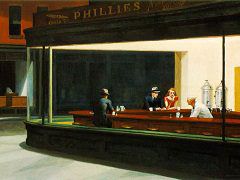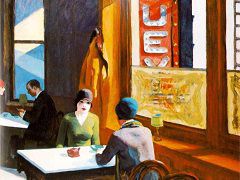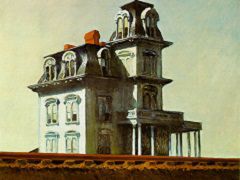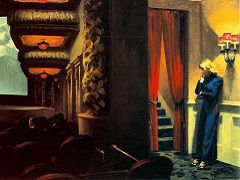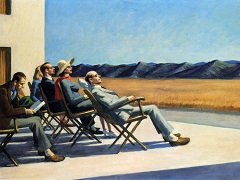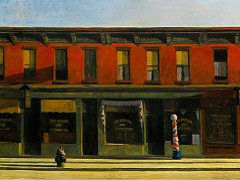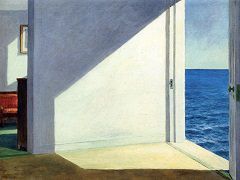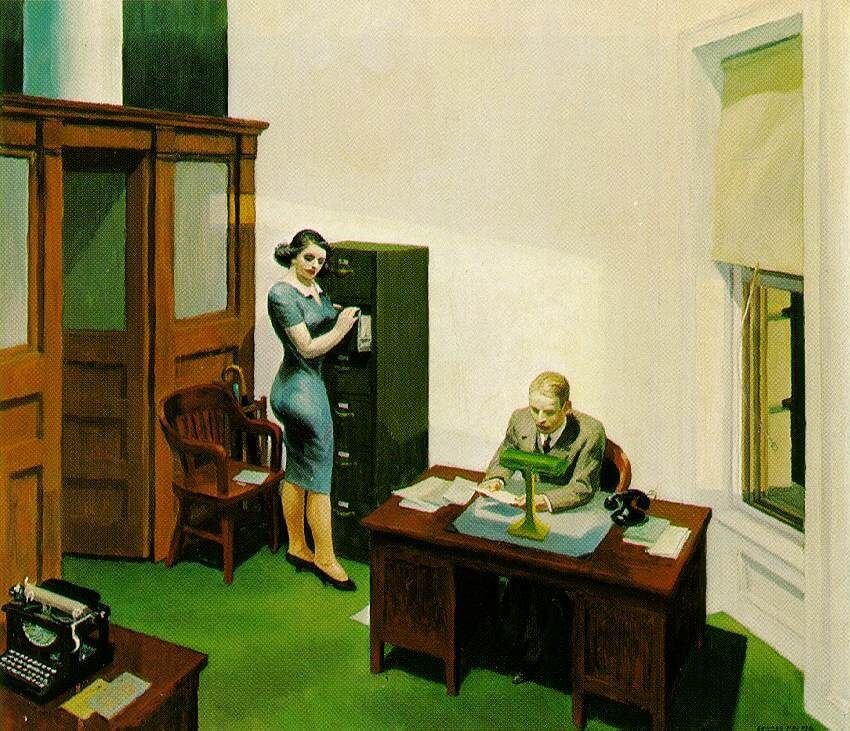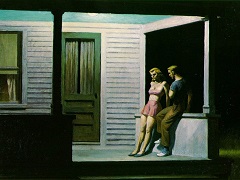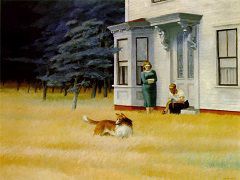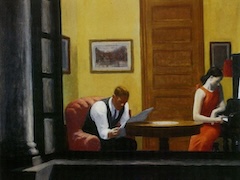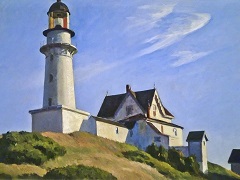Western Motel, 1957 by Edward Hopper
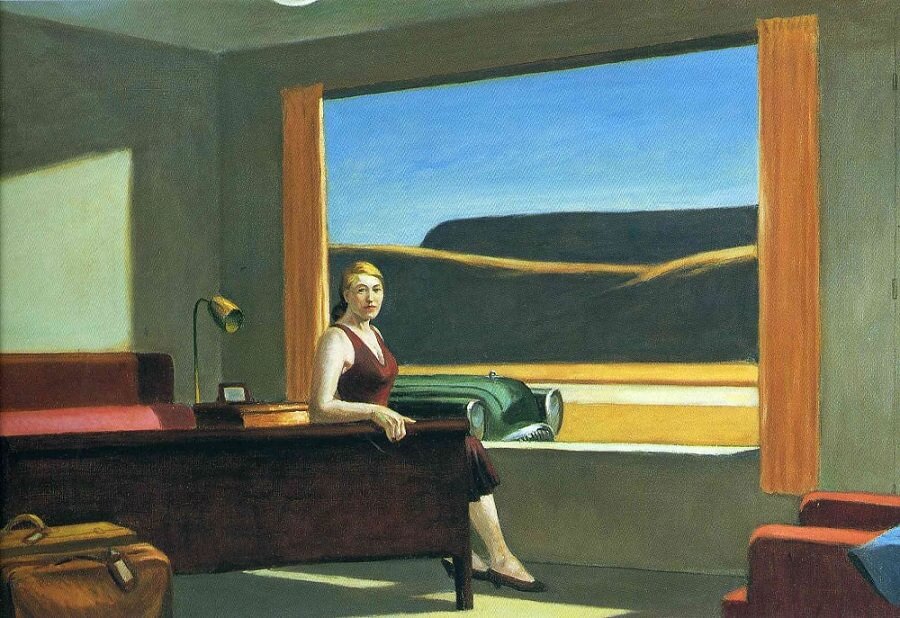
When Hopper paints a situation such as Western Motel, which is obviously raw material for a snapshot, he confers on it a dignity and a meaning that go far beyond the actual circumstances of the picture. By making this anonymous motel room and nondescript western landscape the subject of a painting, he sets up comparisons with other scenes that artists believed significant enough or ubiquitous enough to memorialize in art. Hopper's Western Motel, for example, serves as a very mundane twentieth-century descendant of Albert Bierstadt's nineteenth-century majestic views. It reinforces the fact that the West has been domesticated and is now framed by a picture window that is an extension of the same kind of opening found on 1950s suburban tract houses. Although the generic mountains are exotic, the motel room is familiar to any suburban dweller. The painting thus alludes to the fact that modern travel is often a collection of picture postcards and snapshots that lamely attempt to prove that one has gone outside the constraints of everyday life.

